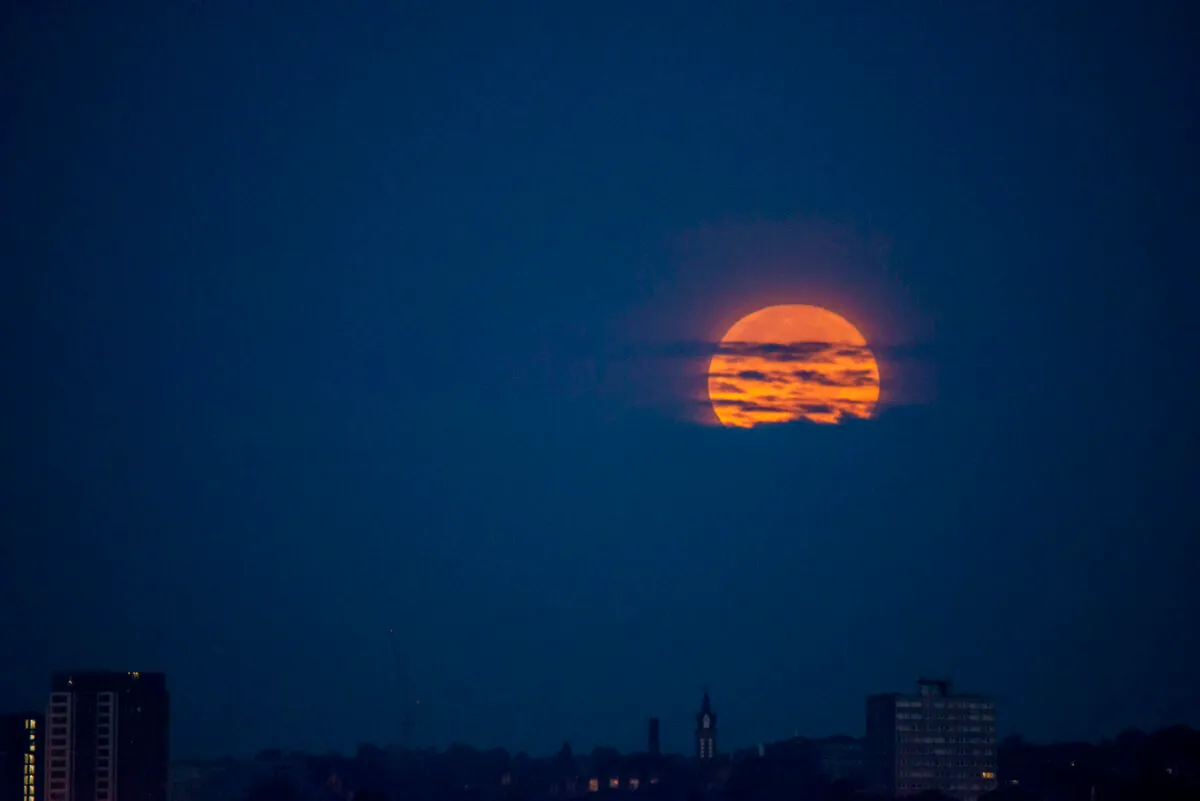Tonight, Friday 29 September sees the appearance of the 'Harvest Moon', which will be the last so-called 'supermoon' of 2023.
If you're planning to head out and observe the bright full Moon tonight, you might notice two prominent 'stars' appearing alongside it.
These stars are in fact the planets Jupiter and Saturn.
In what many often refer to as a 'planetary alignment', the stormy gas giant Jupiter and the ringed planet Saturn will appear either side of the supermoon, making for a great naked-eye spectacle.
You can find out more about observing the Harvest Moon in our video below.
What is the Harvest Moon supermoon?
The term 'Harvest Moon' is rather romantic, but is also appropriate because it references an observable effect.
During the near-to-full phases of the Moon around the September or autumn equinox, there is very little difference in time between moonrises from one day to the next.
There is about less than 15 minutes between September moonrise times on each evening.
Nearer the March equinox, for example, these differences are at a maximum and there can be over an hour between moonrise times from night to night at fuller phases.
Because of these similar rise times, the fuller phases of the Moon were useful for lighting the fields for harvest collection.
Hence the name 'Harvest Moon'.

And why is the 29 September Harvest Moon also a supermoon?
Supermoons occur at the point in the Moon's orbit when it is closest to Earth, known as perigee.
This perigee full Moon appears slightly larger and brighter than an average full Moon, leading some to call it a 'supermoon'
The technical name for a is a 'perigee syzygy Moon'.
If you observe a bright full Moon low down near the horizon, you might notice an effect called the Moon illusion.
See Jupiter and Saturn alongside the Harvest Moon

We asked The Sky at Night's Pete Lawrence for his advice on observing the planets alongside this week's Harvest Moon.
Pete told us that Jupiter, the Moon and Saturn will appear in a line on the evening of 29 September 2023.
Jupiter will appear east (left) of the Moon (separation 31° at 23:00 BST), with Saturn to the west (right) of the Moon (separation 42° at 23:00 BST).
However, as Pete points out, the Moon will wash out everything that's faint in the night sky. Look out for those bright planets Jupiter and Saturn.
Being full on 29 September, a telescopic view of the Moon won't show any shadow relief, so its surface will look pretty flat.
A better tactic for observing the Moon over the coming week, Pete says, would be to catch the full Moon on 29 September, sitting between both planets.
Then keep track of the Moon over the next few evenings.
On 1 October the Moon will sit really close to Jupiter, passing 2.5° north of the planet in the early hours of 2 October.
This Moon will have a phase slightly past full (91% at midnight on 1 October), and will therefore show some shadow relief.
Did you manage to see or even photograph the Harvest Moon and its meeting with Jupiter and Saturn? Don't forget to send us your images.
